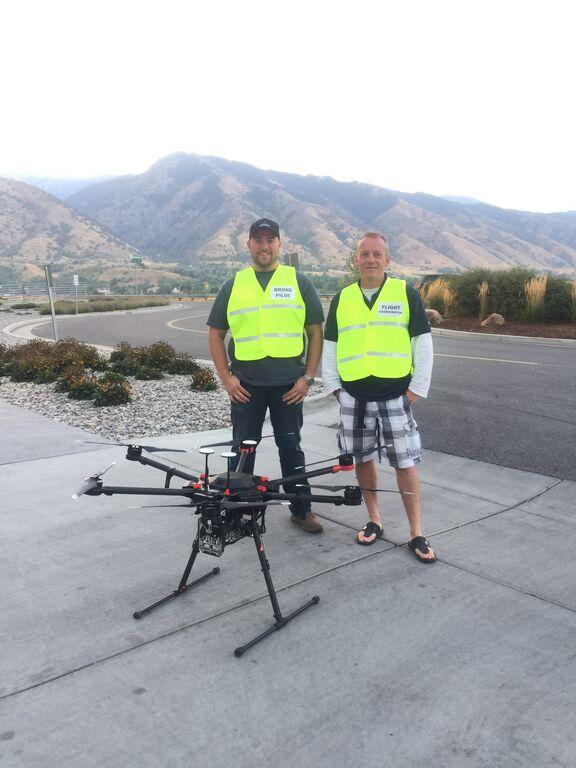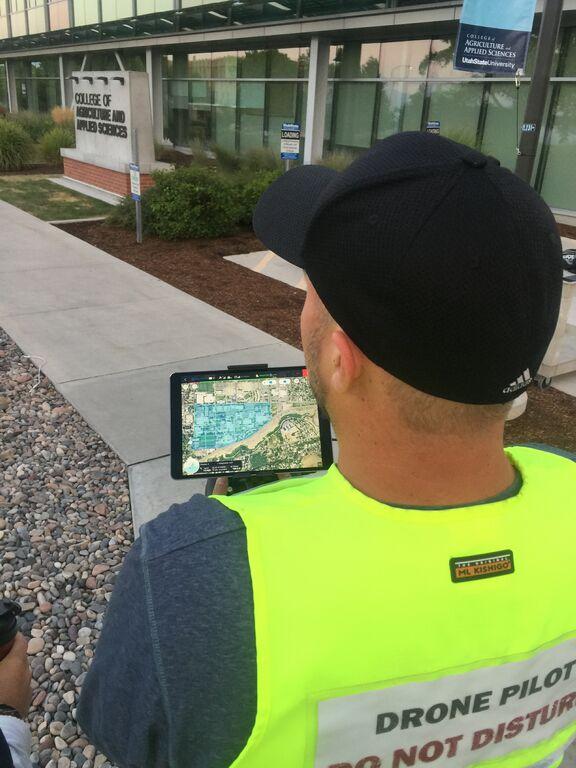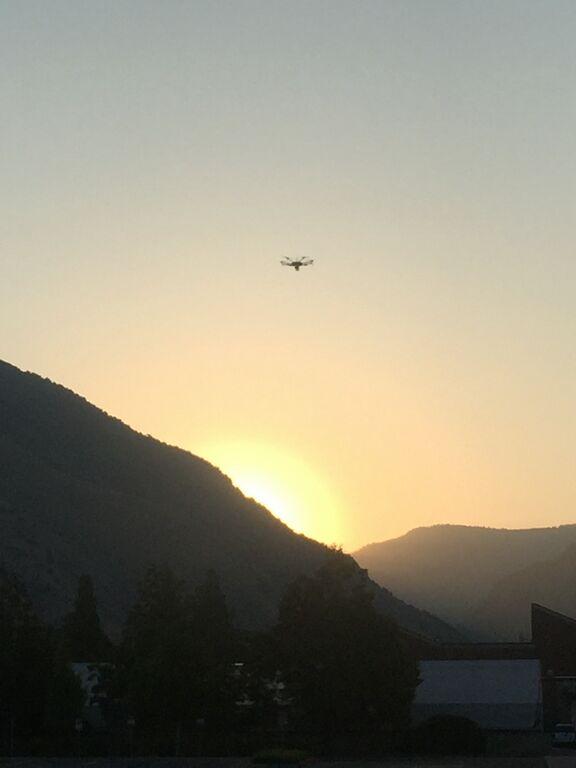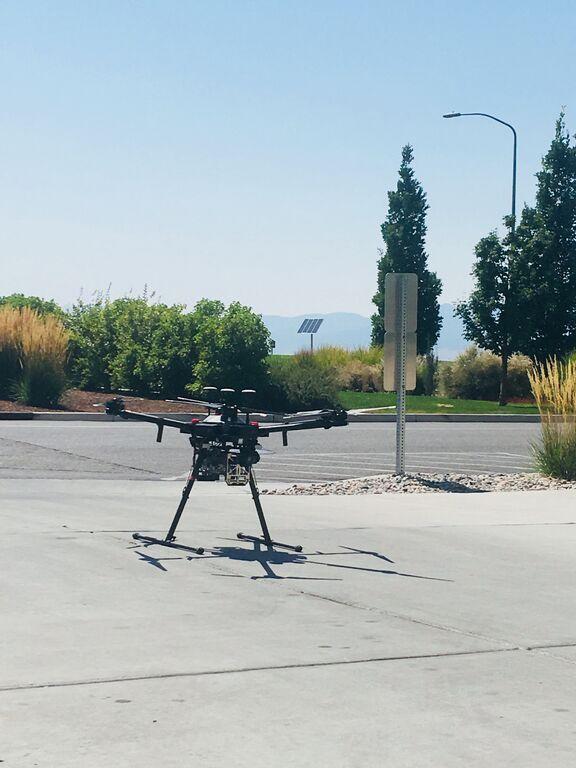Identifying USU Energy Loss
AggieAir Partners with USU Facilities to Discover Energy Loss on Utah State Campus
AggieAirTM, a Service Center of the UWRL specializing in the development and use of small unmanned aerial systems for collecting scientific imagery and data, recently worked with USU Facilities to help them identify energy waste on campus.
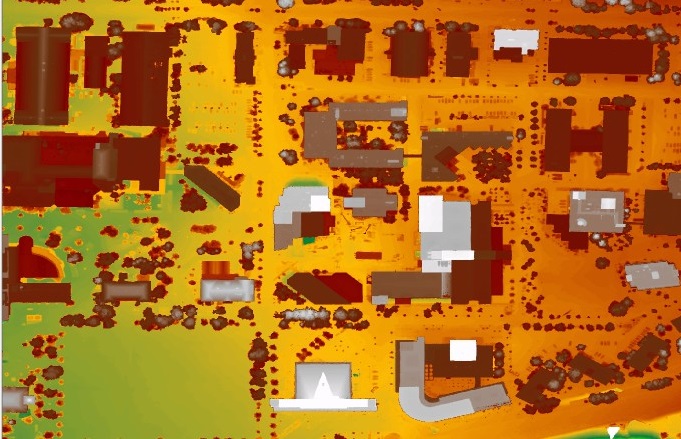
DEM Analysis of USU Campus
Using their smallest UAV, the Matrice 600 Pro, the AggieAir team recently collected thermal imagery that will help map hot and cold areas associated with buildings, equipment, and utility distribution on the USU Campus. Matrice 600 Pro was flown twice, once on Friday morning, and once on Saturday at solar noon. Together, the two flights provide all the information needed to asses the situation. Thermal imagery is more accurate in the morning because contrast between hot and cold temperatures is greater. However, optical contrast is low in the early morning, so the flight at noon gives the clearest imagery of the campus buildings. The team then overlaps the imagery from both flights to create the most accurate thermal map of campus.
With AggieAir’s data, Facilities will be able to locate buildings that may be experiencing above average losses of hot or cold air, and come up with ways to prevent or decrease them. Zachary Cook, the Utilities Energy Manager of USU Facilities, stated that, “We hope to identify electric heat tape or snowmelt systems that may be running when they shouldn’t, loses through leaking building envelopes, and any other numbers of possible issues”. As these problems are fixed, it will reduce energy costs and be an essential step towards achieving the University's sustainability goals.
Although USU Facilities has done heat mapping in the past, previous efforts used a small manned aircraft that had to be flown at a higher altitude and came with a bigger price tag. With AggieAir, gathering data like this is now faster and much less expensive. The thermal imaging gained from Matrice 600 Pro is also much higher in quality and clarity than data gathered in the past, giving Facilities greater knowledge of exact locations that may be losing heat.
###
Technical Contacts:
Ian Gowing - AggieAir Service Center Manager | ian.gowing@usu.edu | 435-797-3159
Cal Coopmans - AggieAir Director | cal.coopmans@usu.edu
Alfonso Torres-Rua - Chief Scientist | alfonso.torres@usu.edu | 435-797-3149
Media Contact:
Brittanie Carter - Public Relations, Utah Water Research Lab | brittanie.carter@usu.edu | 435-797-7176










